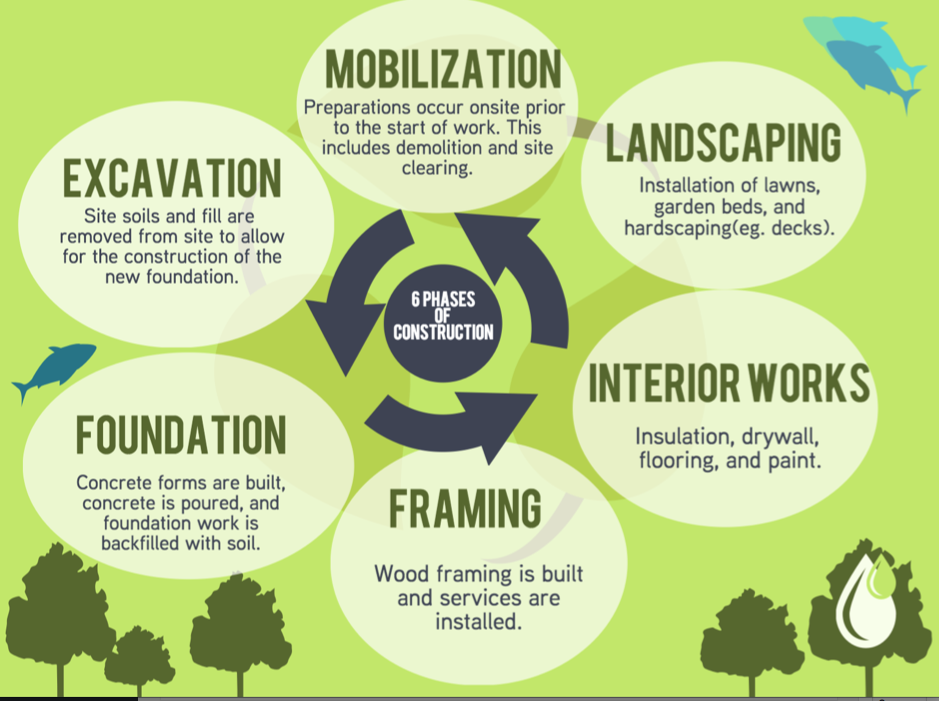The main result of the questionnaire aspect of this project needs to be an investment in further education around the storm water system and the role of the storm water system in the hydrologic cycle. Not enough respondents know where the storm water system drains and what sort of impact releasing pollutants and other materials can have on the surrounding aquatic environments.
Research into each phase of construction shows that there is a greater risk of contaminants entering into the storm water system during the excavation phase, however, respondents felt that more damage was done during the mobilization and demolition phase. Another area where divergence between the available information and the information obtained from respondents had to do with the landscape phase. When executed incorrectly, this phase has a high potential to release sediment and other contaminants into the storm water system while at the same time, if impervious surfaces are chosen to be installed, can lead to the long term increase in runoff entering into the storm water system.
Tools, such as this website, will be very useful to continue to educate people in this industry. More research is also needed on the effects that products can have on aquatic organisms because this information is not readily available. A combination of more research into construction practices and products, as well as increased outreach and education, can be used in combination to reduce the negative effects that this industry can have on surrounding watercourses and watersheds.

